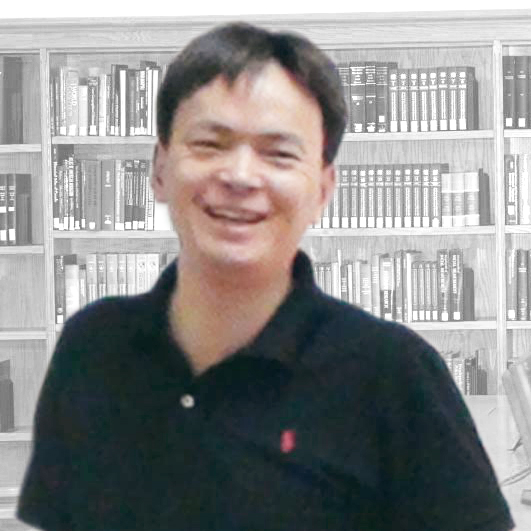Because the framers of the United States Constitution (written in 1787) believed that protecting property rights relating to inventions would encourage the new nation’s economic growth, they gave Congress—the national legislature—a constitutional mandate to grant patents for inventions. The resulting patent system has served as a model for those in other nations. Recently, however, scholars have questioned whether the American system helped achieve the framers’ goals. These scholars have contended that from 1794 to roughly 1830, American inventors were unable to enforce property rights because judges were “antipatent” and routinely invalidated patents for arbitrary reasons. This argument is based partly on examination of court decisions in cases where patent holders (“patentees”) brought suit alleging infringement of their patent rights. In the 1820s, for instance, 75 percent of verdicts were decided against the patentee. The proportion of verdicts for the patentee began to increase in the 1830s, suggesting to these scholars that judicial attitudes toward patent rights began shifting then.
Not all patent disputes in the early nineteenth century were litigated, however, and litigated cases were not drawn randomly from the population of disputes. Therefore the rate of verdicts in favor of patentees cannot be used by itself to gauge changes in judicial attitudes or enforceability of patent rights. If early judicial decisions were prejudiced against patentees, one might expect that subsequent courts—allegedly more supportive of patent rights—would reject the former legal precedents. But pre-1830 cases have been cited as frequently as later decisions, and they continue to be sited today, suggesting that the early decisions, many of which clearly declared that patent rights were a just recompense for inventive ingenuity, provided a lasting foundation for patent law. The proportion of judicial decisions in favor of patentees began to increase during the 1830s because of a change in the underlying population of cases brought to trial. This change was partly due to an 1836 revision to the patent system: an examination procedure, still in use today, was instituted in which each application is scrutinized for its adherence to patent law. Previously, patents were automatically granted upon payment of a $30 fee.
529: The passage implies that which of the following was a reason that the proportion of verdicts in favor of patentees began to increase in the 1830s?
A) Patent applications approved after 1836 were more likely to adhere closely to patent law.
B) Patent laws enacted during the 1830s better defined patent rights.
C) Judges became less prejudiced against patentees during the 1830s.
D) After 1836, litigated cases became less representative of the population of patent disputes.
E) he proportion of patent disputes brought to trial began to increase after 1836.
530: The passage implies that the scholars mentioned in the highlight part would agree with which of the following criticisms of the American patent system before 1830?
A) Its definition of property rights relating to inventions was too vague to be useful.
B) Its criteria for the granting of patent were not clear.
C) It made it excessively difficult for inventors to receive patents.
D) It led to excessive numbers of patent-infringement suits.
E) It failed to encourage national economic growth.
531: It can be inferred from the passage that the frequency with which pre-1830 cases have been cited in court decisions is an indication that
A) judicial support for patent rights was strongest in the period before 1830
B) judicial support for patent rights did not increase after 1830
C) courts have returned to judicial standards that prevailed before 1830
D) verdicts favoring patentees in patent-infringement suits did not increase after 1830
E) judicial bias against patentees persisted after 1830
532: It can be inferred from the passage that the author and the scholars referred to in the highlight part disagree about which of the following aspects of the patents defended in patent-infringement suits before 1830?
A) Whether the patents were granted for inventions that were genuinely useful
B) Whether the patents were actually relevant to the growth of the United States economy
C) Whether the patens were particularly likely to be annulled by judges
D) Whether the patents were routinely invalidated for reasons that were arbitrary
E) Whether the patents were vindicated at a significantly lower rate than patents in later suits
533:The author of the passage cites which of the following as evidence challenging the argument referred to in the highlight part?
A) The proportion of cases that were decided against patentees in the 1820s
B) The total number of patent disputes that were litigated from 1794 to 1830
C) The fact that later courts drew upon the legal precedents set in pre-1830 patent cases
D) The fact that the proportion of judicial decisions in favor of patentees began to increase during the 1830s
E) The constitutional rationale for the 1836 revision of the patent system
Because the framers of the United States Constitution (written in 1787) believed that protecting property rights relating to inventions would encourage the new nation’s economic growth, they gave Congress—the national legislature—a constitutional mandate to grant patents for inventions. The resulting patent system has served as a model for those in other nations. Recently, however, scholars have questioned whether the American system helped achieve the framers’ goals. These scholars have contended that from 1794 to roughly 1830, American inventors were unable to enforce property rights because judges were “antipatent” and routinely invalidated patents for arbitrary reasons. This argument is based partly on examination of court decisions in cases where patent holders (“patentees”) brought suit alleging infringement of their patent rights. In the 1820s, for instance, 75 percent of verdicts were decided against the patentee. The proportion of verdicts for the patentee began to increase in the 1830s, suggesting to these scholars that judicial attitudes toward patent rights began shifting then.
Not all patent disputes in the early nineteenth century were litigated, however, and litigated cases were not drawn randomly from the population of disputes. Therefore the rate of verdicts in favor of patentees cannot be used by itself to gauge changes in judicial attitudes or enforceability of patent rights. If early judicial decisions were prejudiced against patentees, one might expect that subsequent courts—allegedly more supportive of patent rights—would reject the former legal precedents. But pre-1830 cases have been cited as frequently as later decisions, and they continue to be sited today, suggesting that the early decisions, many of which clearly declared that patent rights were a just recompense for inventive ingenuity, provided a lasting foundation for patent law. The proportion of judicial decisions in favor of patentees began to increase during the 1830s because of a change in the underlying population of cases brought to trial. This change was partly due to an 1836 revision to the patent system: an examination procedure, still in use today, was instituted in which each application is scrutinized for its adherence to patent law. Previously, patents were automatically granted upon payment of a $30 fee.
529: The passage implies that which of the following was a reason that the proportion of verdicts in favor of patentees began to increase in the 1830s?
A) Patent applications approved after 1836 were more likely to adhere closely to patent law.
B) Patent laws enacted during the 1830s better defined patent rights.
C) Judges became less prejudiced against patentees during the 1830s.
D) After 1836, litigated cases became less representative of the population of patent disputes.
E) he proportion of patent disputes brought to trial began to increase after 1836.
530: The passage implies that the scholars mentioned in the highlight part would agree with which of the following criticisms of the American patent system before 1830?
A) Its definition of property rights relating to inventions was too vague to be useful.
B) Its criteria for the granting of patent were not clear.
C) It made it excessively difficult for inventors to receive patents.
D) It led to excessive numbers of patent-infringement suits.
E) It failed to encourage national economic growth.
531: It can be inferred from the passage that the frequency with which pre-1830 cases have been cited in court decisions is an indication that
A) judicial support for patent rights was strongest in the period before 1830
B) judicial support for patent rights did not increase after 1830
C) courts have returned to judicial standards that prevailed before 1830
D) verdicts favoring patentees in patent-infringement suits did not increase after 1830
E) judicial bias against patentees persisted after 1830
532: It can be inferred from the passage that the author and the scholars referred to in the highlight part disagree about which of the following aspects of the patents defended in patent-infringement suits before 1830?
A) Whether the patents were granted for inventions that were genuinely useful
B) Whether the patents were actually relevant to the growth of the United States economy
C) Whether the patens were particularly likely to be annulled by judges
D) Whether the patents were routinely invalidated for reasons that were arbitrary
E) Whether the patents were vindicated at a significantly lower rate than patents in later suits
533:The author of the passage cites which of the following as evidence challenging the argument referred to in the highlight part?
A) The proportion of cases that were decided against patentees in the 1820s
B) The total number of patent disputes that were litigated from 1794 to 1830
C) The fact that later courts drew upon the legal precedents set in pre-1830 patent cases
D) The fact that the proportion of judicial decisions in favor of patentees began to increase during the 1830s
E) The constitutional rationale for the 1836 revision of the patent system
-
王可达,可达GMAT教学总监,美国国家广播公司NB......
-
小安,江湖人称“安美女”、可达GMAT主讲名师。从......
-
英语教学专家,西方哲学专业硕士,学术背景深厚,知名......
更多内容请您加公共微信关注:


雅思(英语:IELTS),全称为国际英语测试系统(International English Language Testing System),是著名的国际性英语标准化水平测试之一。
留学,10余年培训经验,资深留学老师,提供更专业的培训全程服务,冲刺TOP名校。留学,考试辅导!24小时免费答疑
The Test of English as a Foreign Language,简称TOEFL
是由美国教育测验服务社(ETS)举办的英语能力考试,中文音译为“托福”。
Scholastic Assessment Test
中文名称为学术能力评估测试。由美国大学委员会(College Board)主办,SAT成绩是世界各国高中生申请美国名校学习及奖学金的重要参考。
Graduate Record Examination
中文名称为美国研究生入学考试,适用于除法律与商业外的各专业,由美国教育考试服务处(Educational Testing Service,简称ETS)主办.






